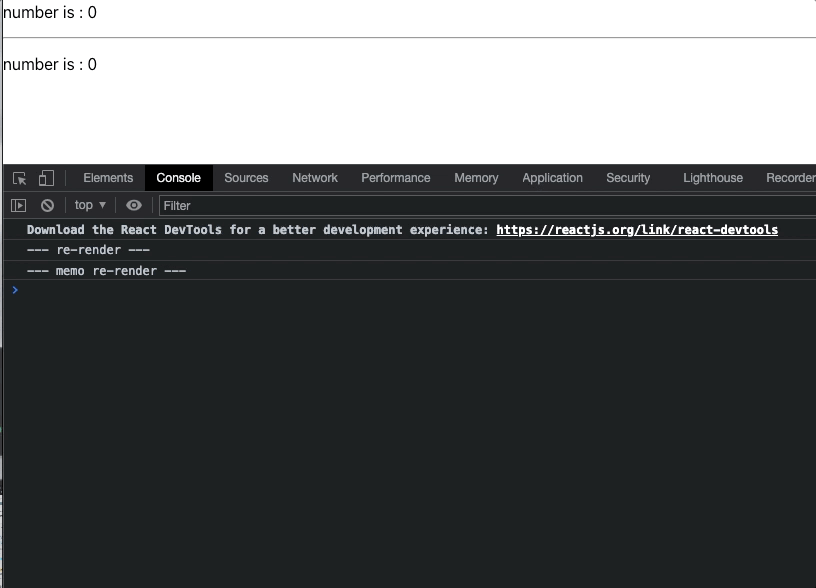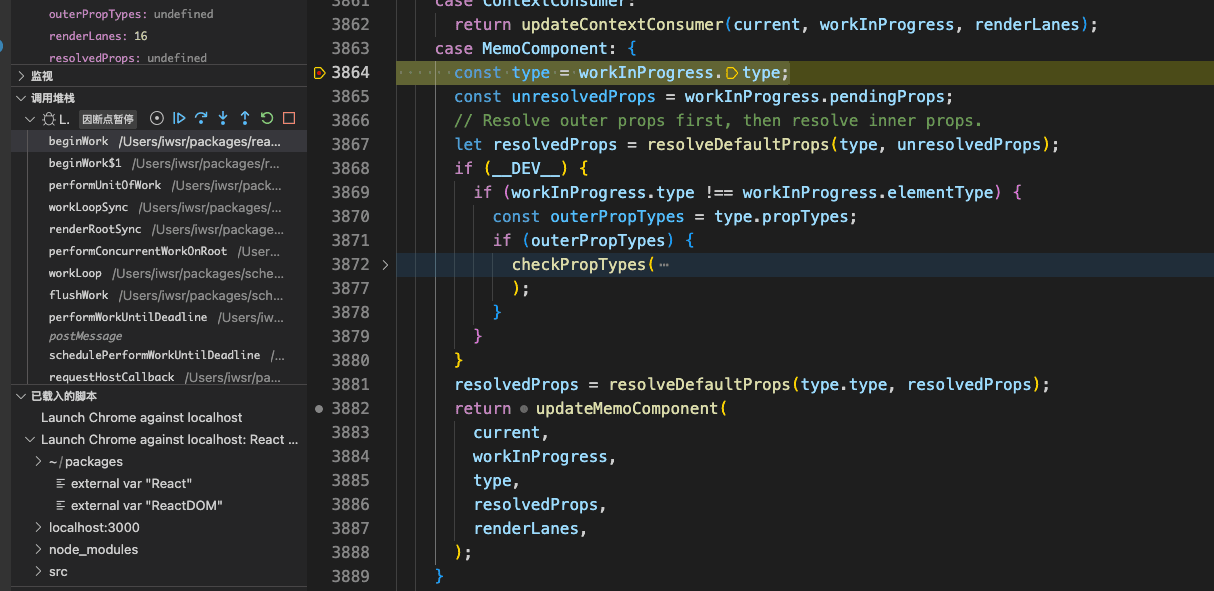TLNR#
- React.memo adds the REACT_MEMO_TYPE tag to the incoming component, which allows it to perform a shallow comparison of the props before each update (or compare the new and old props using a compare function) to determine whether to reuse the original fiber component.
- If there is an update within the current component, the memo component will skip the comparison and directly generate a new fiber.
Explanation#
Based on the following code analysis:
import React, { useState, memo } from 'react';
const isEqual = (prevProps, nextProps) => {
if (prevProps.number !== nextProps.number) {
return false;
}
return true;
}
const ChildMemo = memo((props = {}) => {
console.log(`--- memo re-render ---`);
return (
<div>
<p>number is : {props.number}</p>
</div>
);
}, isEqual);
function Child(props = {}) {
console.log(`--- re-render ---`);
return (
<div>
<p>number is : {props.number}</p>
</div>
);
};
export default function ReactMemo(props = {}) {
const [step, setStep] = useState(0);
const [count, setCount] = useState(0);
const [number, setNumber] = useState(0);
const handleSetStep = () => {
setStep(step + 1);
}
const handleSetCount = () => {
setCount(count + 1);
}
const handleCalNumber = () => {
setNumber(count + step);
}
return (
<div>
<button onClick={handleSetStep}>step is : {step} </button>
<button onClick={handleSetCount}>count is : {count} </button>
<button onClick={handleCalNumber}>numberis : {number} </button>
<hr />
<Child step={step} count={count} number={number} /> <hr />
<ChildMemo step={step} count={count} number={number} />
</div>
);
}
The following is the output after clicking the buttons from left to right. It can be seen that the component wrapped in memo is only updated when it satisfies the compare function, while the other component is re-rendered every time it is clicked.

Starting with React.memo#
Set a breakpoint on ChildMemo, and we will enter the memo function.
export function memo<Props>(
type: React$ElementType,
compare?: (oldProps: Props, newProps: Props) => boolean,
) {
... Removed dev logic
const elementType = {
$$typeof: REACT_MEMO_TYPE,
type,
compare: compare === undefined ? null : compare,
};
... Removed dev logic
return elementType;
}
The logic is simple. It adds the REACT_MEMO_TYPE tag to the wrapped component. This step will have an impact when building the WIP tree (beginWork), which means it will enter the logic for MemoComponent.
How beginWork Handles MemoComponent#
Set a breakpoint on the case MemoComponent in beginWork. Trigger an update, and it will enter the logic for memo (this function is also used in the mount phase to create nodes).

function updateMemoComponent(
current: Fiber | null,
workInProgress: Fiber,
Component: any,
nextProps: any,
renderLanes: Lanes,
): null | Fiber {
// If current is null, it means it is in the mount phase
// When current is null, create the corresponding fiber node (createFiberFromTypeAndProps) since there is no object to compare with
if (current === null) {
const type = Component.type;
...
... Removed dev logic
const child = createFiberFromTypeAndProps(
Component.type,
null,
nextProps,
workInProgress,
workInProgress.mode,
renderLanes,
);
child.ref = workInProgress.ref;
child.return = workInProgress;
workInProgress.child = child;
return child;
}
... Removed dev logic
// Since current node exists, it enters the update logic
const currentChild = ((current.child: any): Fiber); // This is always exactly one child
// renderLanes is the current rendering priority, which means only updates with the same priority as renderLanes will be processed in this render
// When an update is generated, the lanes of the current update are marked on root.pendingLanes. The highest priority on root.pendingLanes becomes renderLanes
// You can check React Hooks: useState for more detailed explanation
// The function below actually checks whether there is an update instance on the current fiber with the same priority as renderLanes. If it exists, it means that this update
// must be processed in this render, which means that even if the props passed in have not changed (or the compare function returns true), this component will still be updated
// This is the conclusion corresponding to the second point in TLNR
const hasScheduledUpdateOrContext = checkScheduledUpdateOrContext(
current,
renderLanes,
);
// If there is no update on the current fiber that needs to be processed immediately,
// enter the logic inside the if statement
if (!hasScheduledUpdateOrContext) {
// This will be the props with resolved defaultProps,
// unlike current.memoizedProps which will be the unresolved ones.
const prevProps = currentChild.memoizedProps;
// Default to shallow comparison
let compare = Component.compare;
// If compare does not exist, which means the second argument of React.memo is not passed, the default shallowEqual will be used
// shallowEqual is a shallow comparison that only compares whether the reference addresses of the two props have changed
compare = compare !== null ? compare : shallowEqual;
if (compare(prevProps, nextProps) && current.ref === workInProgress.ref) {
// If compare returns true, it means that the component wrapped in memo can be reused, so call bailoutOnAlreadyFinishedWork to reuse the node on the current tree
// This avoids the need to regenerate nodes, thus optimizing performance
// I will add the analysis of this bailoutOnAlreadyFinishedWork function to the appendix later
return bailoutOnAlreadyFinishedWork(current, workInProgress, renderLanes);
}
}
// React DevTools reads this flag.
workInProgress.flags |= PerformedWork;
// If it reaches this point, it means that there is an update on the current fiber that needs to be processed immediately
// So we have to regenerate the node
const newChild = createWorkInProgress(currentChild, nextProps);
newChild.ref = workInProgress.ref;
newChild.return = workInProgress;
workInProgress.child = newChild;
return newChild;
}